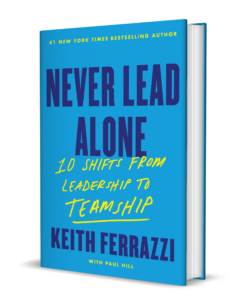After 25 years of coaching executive teams, I’ve seen countless company transformations first hand and it’s often not pretty. For many reasons, rarely do we get a real look under the hood in the books we read. When I picked up “Reinventing the Leader” by Guilherme Loureiro and Carlos Marin, I found something refreshing: a brutally honest account of what it actually takes to lead through transformation.
In “Reinventing the Leader,” Loureiro and Marin deliver a compelling dual narrative that chronicles both a massive corporate transformation and the deeply personal journey of leadership growth. Drawing from Loureiro’s experience transforming Walmex—Walmart’s largest international operation—into a digital, agile company while maintaining record performance, this book offers rare insight into how personal reinvention and organizational change are inextricably linked.
The book’s strength lies in its honest, vulnerable portrayal of leadership challenges. Rather than presenting a sanitized success story, Loureiro candidly shares his struggles with feedback, his initial resistance to change, and the painful process of confronting his own behavioral blind spots. This authenticity, combined with executive coach Carlos Marin’s professional insights, creates a uniquely practical guide for leaders facing similar challenges.
Three Essential Takeaways for Leaders
1. Master the Art of Active Listening Through “Empathic Silence”
The most transformative practice in the book centers on what the authors call “empathic silence”—the discipline of truly listening without interrupting, defending, or immediately problem-solving. Loureiro’s journey from an impatient, interrupting CEO to one who genuinely hears his team illustrates the profound impact of this shift.
Immediate Implementation: Start each meeting by asking questions and then practicing what they call the “Listening Checklist”:
- Are team members bringing concerns to you directly?
- Can you listen without interrupting?
- Do you remain calm when hearing disagreement?
- Are you aware of your body language during conversations?
The authors provide another practical framework: seeking “feedforward” rather than feedback—this is a focus on future improvements rather than past mistakes. Coined by his friend and renowned executive coach Marshall Goldsmith, this subtle shift transforms defensive conversations into collaborative problem-solving sessions.
2. Apply the Three Questions Framework for Change Readiness
Perhaps the most actionable tool in the book is the elegantly simple three-question assessment that helped Walmex evaluate readiness for transformation:
- Do you understand the change?
- Do you want to make the change?
- Are you able to make the change?
Immediate Implementation:
Use these questions in two ways:
- For team assessment: When implementing any significant change, have team members email you their honest answers to these three questions. This creates both accountability and reveals who needs additional support.
- For self-reflection: Regularly ask yourself these questions about your own leadership growth areas.
The genius of this framework is its simplicity—it cuts through complexity to reveal the fundamental elements needed for successful change: understanding, motivation, and capability.
3. Embrace the “Minimum Viable Person” Approach to Leadership Development
Drawing from the tech world’s concept of Minimum Viable Product (MVP), the authors introduce the powerful idea of becoming a “Minimum Viable Person”—focusing on incremental improvement rather than perfection. This approach proved crucial during Loureiro’s own behavioral transformation and the company’s digital evolution.
Immediate Implementation:
- Choose 1-2 specific behaviors to improve (not a complete personality overhaul)
- Create a simple feedback loop with trusted colleagues
- Celebrate progress, not perfection
- Apply the same iterative approach to business initiatives—launch “good enough” solutions and improve based on real feedback
This approach reduces the paralysis that comes from pursuing perfection and creates momentum through continuous improvement.
A Practical Leadership Manual
What sets this book apart from typical leadership literature is its integration of personal and organizational transformation. The authors demonstrate that you cannot effectively change a company without changing yourself first—a lesson many leaders learn too late, if at all.
The book’s structure, alternating between Loureiro’s CEO perspective and Marin’s coaching insights, provides both the strategic view and the tactical tools needed for implementation. The inclusion of direct quotes from team members adds credibility and shows the real impact of the changes described.
Who Should Read This?
This book is essential reading for:
- CEOs and senior executives leading organizational transformations
- Leaders struggling with team dynamics or feedback issues
- Anyone managing the tension between maintaining performance while driving change
- Coaches and consultants working with leadership teams
“Reinventing the Leader” offers something increasingly rare in business literature: an honest, practical guide that acknowledges leadership is as much about personal growth as it is about strategy execution. The authors’ willingness to share failures alongside successes makes this not just an informative read, but an inspiring one.
The ultimate message is both simple and profound: the key to transforming your organization lies first in transforming yourself. For leaders ready to embark on that dual journey, this book provides an invaluable roadmap.






